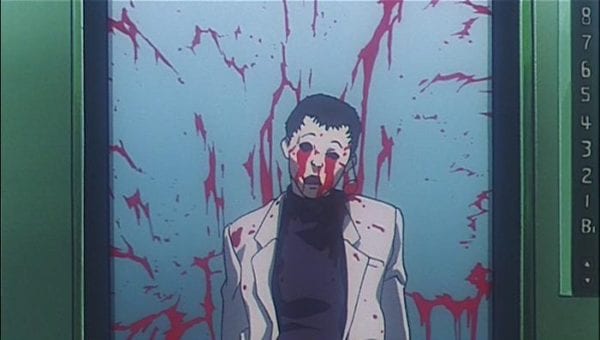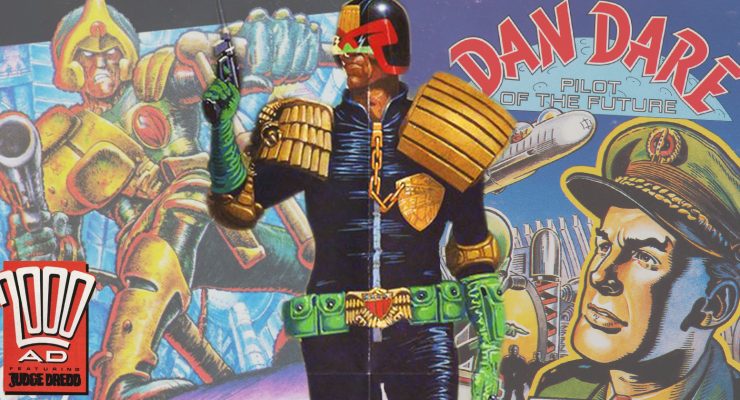Perfect Blue, 1997.
Directed by Satoshi Kon.
Featuring the voice talents of Junko Iwao, Rica Matsumoto, Shinpachi Tsuji, Masaaki Ôkura, Yôsuke Akimoto, Yoku Shioya, and Hideyuki Hori.
SYNOPSIS:
Pop star Mima decides to retire from her days as a member of the girl-band CHAM! to pursue an acting career, a decision that is met with hostility from her devoted fan base. As she embarks upon her new career path, Mima finds herself having to contend with a sinister stalker and her own rapidly disintegrating sanity.
I imagine it must be pretty difficult being a celebrity with all the pressures of stardom weighing down upon you day in day out. Sure you have the scores of adoring fans who regularly heap praise and love upon you, but you also have to deal the small but very vocal minority of people who have nothing better to do with their sad existences than wish you a slow and painful death for no real reason other than existing.
This focus on celebrity and its damaging effect brings me today edition of October Horrors in which we break new ground by taking a look at our first animated film. It’s the dark and violent anime cult classic Perfect Blue.
First and foremost, I am in no way an anime fan by any stretch. It’s a genre that, while I have nothing against, I’ve just never really gotten into in quite the way I get into other genres. That being said, I had heard of Perfect Blue and its reputation as a cult classic, hence why I picked it to spotlight it. Suffice to say its reputation, in my view at least, is more than deserved.
On the surface, Perfect Blue is a violent murder mystery following Mima as she attempts to break away from her label as a pop idol and embrace her new career as a serious actress, all the while she finds herself tailed by the sinister stalked dubbed “Me-Mania”. Beneath the skin, however, the film is it’s a far more complex beast that takes in deeper and darker themes often in sometimes subtle and sometimes not so subtle fashion.
The manner in which Mima finds herself increasingly more difficult situations for her career, such as filming a graphic rape scene as part of her new role in a TV show or posing nude for a photoshoot helmed by a pervy photographer can be considered subtle commentaries on the way women are objectified by pop culture. Another way that this theme is presented, at least in my interpretation, is a scene in which the stalker “Me-Mania” holds his hand under his eye while watching Mima and her bandmates perform, almost like he’s holding her up like a doll or a figurine in his hand to admire.
The biggest theme of the film is, of course, the often damaging effect that fame has on both the famous themselves and on their fans. The pressure for Mima to break away from her pop career leave her mentally unstable and haunted by visions of her past self, mocking her for ditching her music career. It’s a deeply unsettling portrait of the damage that the pressures of fame can inflict upon people, and doesn’t seem a far cry from a handful of real-life examples in which the pressures of fame became just too much to bear for some.
The character of “Me-Mania” is arguably one of the most disturbing characters that I’ve come across in the years that I’ve been doing this series. A grotesque, near silent character whose every moment on screen leaves your skin crawling. His walls adorned with photos of his idol and utterly convinced she somehow speaks to him and only him, ready to “do her bidding” against those he feels have wronged her. It’s a deeply disturbing character that really worms its way into your head and, much like the character of Mima, is one that you don’t have to look far to find real-life parallels with.
Perfect Blue is not just a feast for the mind but also a feast for the eyes, offering up some terrific animation and framing that expertly contrasts the bright and beautiful world of Mima’s pop star days and the dark and disturbing nature of her rapidly disintegrating mind. Often you’ll have moments where sinister visuals and striking use of colour, especially blood red, leaving you drowning in the film’s suffocating atmosphere.
The excellent visuals also extend to the manner in which way the characters are drawn, with the character of “Me-Mania” (yes I’m still talking about him) being the most strikingly drawn with his nightmarish and almost inhuman features making his already creepy presence all the scarier.
The film exists in both a subtitled Japanese version and an English dubbed version (which I watched) and if you have the option I would go for the Japanese version. The English dub is fine with some of the voice acting even being quite good, especially on Mima’s nightmarish vision of herself whose cheery nature is creepy as hell. At other times though, the voice acting it can be a bit jarring and mismatched such as when “Me-Mania” finally talks with his voice actor sounding like a somewhat hysterical and bad Steve Buscemi impersonator.
With a simple yet thematically rich story, striking visuals that let you soak up the atmosphere and some top-notch animation with well-drawn characters, Perfect Blue is perhaps the best place to start for any aspiring anime horror fan. Check it out, just don’t get too obsessed with it.
Scare Rating: ? ? ? ?
Flickering Myth Rating – Film: ★ ★ ★ ★ ★ / Movie: ★ ★ ★ ★
Graeme Robertson














